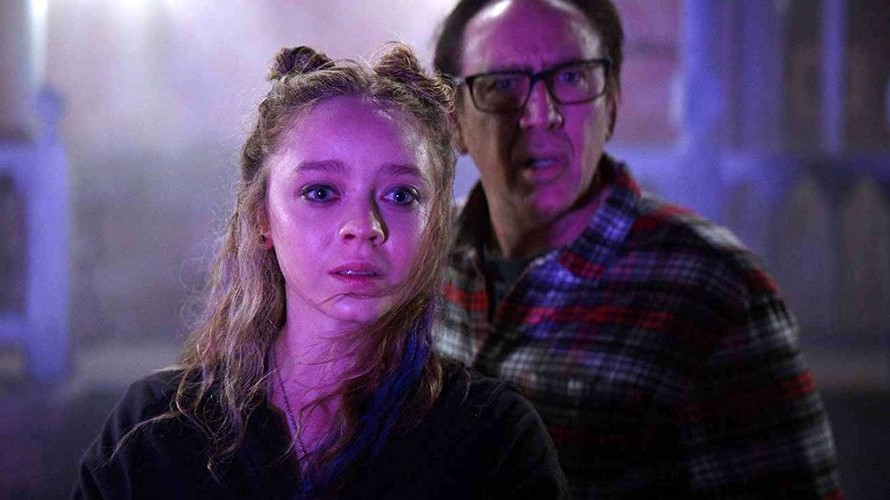Color Out of Space
2009

Rated: R
Genre: Horror, Sci-Fi
Country: U.S.
Run-Time: 1 h 51 min
Director: Richard Stanley
Cast
Nicolas Cage……………………….Nathan
Madeleine Arthur……………..Lavinia
Elliot Knight…………………………Ward
Tommy Chong……………………Ezra
Adapting a Lovecraft story to film has historically been a disappointing venture. As an author, Lovecraft tried to invoke the imagination as much as possible, so he often employed ambiguous, hyperbolic language to describe his horrors. Words like “unutterable”, “unimaginable” or “indescribable” may conjure up images in a reader’s head, but these horrors have often proven to be too enormous and evasive for the many ambitious filmmakers who tried to transfer Lovecraft’s words onto cellulite, though not for a lack of trying. Take for example the multiple attempts over the years to adapt Lovecraft’s short story “The Colour Out of Space” to the big screen. All it takes is a quick search of the Internet to find a string of long forgotten “The Colour Out of Space” adaptations, some barely a decade old. The truth is that most faithful Lovecraft adaptations suffer from the same pacing and production problems that plague most film adaptations based on elusive source material. So, it is actually rather remarkable that in 2019, Richard Stanley’s Colour Out of Space proves to be an adaptation genuinely captures the spirit of Lovecraft’s original story while still being enjoyable to watch.
Like Lovecraft’s 1927 original story, Colour Out of Space tells the tale of a meteorite found in a remote valley in Massachusetts which emits an alien colour (the film uses an ethereal purple hue) that slowly mutates all genetic material in the surrounding area in strange and horrific ways. Though the story is set in contemporary times, and changes have been made to the characters, Stanley stays relatively true to the horrors found in Lovecraft’s original, while finding ways to ratchet up the crazy in bloody, and intentionally schlocky ways. You get the sense that the special effects department must have had a blast working on this film, since it incorporated an extensive combination of both practical effects and CGI. And though I will admit the final product is a bit inconsistent in terms of realism- as is often the case when horror films employ CGI- Stanley’s film does succeed in providing a number of memorably nightmarish visuals to depict terrors caused by Lovecraft’s “frightful messenger from unformed realms of infinity.”
While other directors have tried adapting this story as a serious drama, Stanley casts Nicolas Cage and Tommy Chong as a knowing wink to the audience that the bloodshed is all intended as gory fun. While Chong plays things relatively straight, Cage, whose recent post-Wickerman revival in the horror genre has been an astonishing exercise in self-parody, sometimes acts like he is improvising his lines, but has forgotten the plot. It is a descent more into confusion than madness, but one that works surprisingly well in a film where characters are supposed to be mentally disintegrating.
Films like Colour Out of Space are not the type of films where viewers go in expecting casualty-free outcomes. The fun in this type of film is in watching the havoc caused while the contagion spreads, in this case the contagion being the alien hue. And unlike most horror antagonists, this alien colour is essentially invincible and capably of disrupting reality in multiple, evolving ways, similar to the alien presence in Alex Garland’s science fiction classic Annihilation. But while Annihilation is undeniably a cerebral masterpiece, Colour Out of Space knows it is a B-movie at its core, though one that has enough going right for it that I will gladly give it a recommendation. Simply put, Colour Out of Space is an excellent addition to the contamination-horror genre. And you will be hard pressed to find a better adaptation of a Lovecraft story out there.
